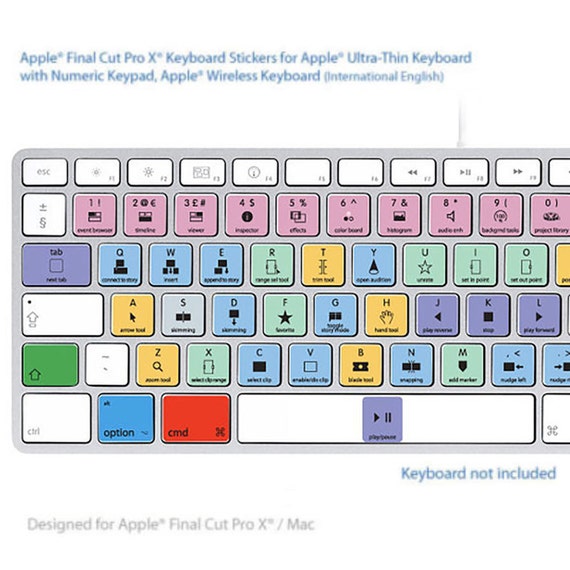


One way to quickly highlight a clip and have the timeline cursor move at the same time is hold down the Option key and click it, and Final Cut Pro X will move your timeline cursor there as well. So as you drag the sliders in the Color Adjustment panel, you’re making changes to the clip that you selected, but you’re not seeing them previewed because the timeline cursor is on a different clip in the timeline. The reason is because the timeline cursor is elsewhere, and we’re viewing the clip under the timeline cursor, not the on selected for adjustments. If you go into the Inspector and start making changes, you’ll notice nothing’s changing. Click it and highlight it to load it into the Inspector. Now let’s say you want to do some work on a specific clip that doesn’t happen to be under the timeline cursor. One way to make sure you’re adjusting the same clip you’re seeing is to hit the C key on your keyboard as it’s playing and it’ll automatically select whatever clip is below the timeline cursor. The moral of the story is, make sure whatever clip you’re working on is selected. The adjustment we’re making is applied to the selected clip, which happens to be the one next to the clip currently in the preview window. Making a color adjustment to the clip at the timeline cursor (with no other clip selected) by dragging the Saturation slider in the Color section of the Inspector.īut if I do the same thing with the clip before it selected, the clip at the timeline cursor (and shown in the preview window) will not be affected. Opening the Color Adjustment panel.įigure 4. As you can see in Figure 4 (below Figure 3), it goes into black and white.įigure 3. In the Color Adjustment panel for Correction 1, I go to Saturation, and drag the saturation down. I click the arrow for Correction 1, as shown in Figure 3 (below). Let’s say I want to make a color adjustment. If nothing is selected on my timeline, whatever clip the timeline cursor is over will actually be automatically be loaded into the Inspector. But as I mentioned before, we’ll concern ourselves primarily with the Color area in this tutorial.īefore we get started, it’s important to understand timeline cursor behavior in selections and how they work. So if you grab an Effect and drag it onto a clip, it will populate this Effects area. That one will populate with effects as you add them from the Effects palette. Right above the Color area you see there is one other section: the Effects section. The Effects and Color sections of the Final Cut Pro X Inspector. This is the area of the Inspector you’ll use the most.įigure 2. In this tutorial we’re going to focus on the Color area. To inspect the Inspector ( Figure 2, below), we’ll start from the top and work our way down. (Click on this image-or any screenshot in this article-to see a full-size version in a new window.) Working in the Color Area Click this icon to toggle the Inspector on or off. You can also show or hide the Inspector by using the keyboard shortcut Command+4.įigure 1. It looks like a bunch of sliders with knobs on it, and it toggles on and off when you click it ( Figure 1, below). To tell FCP X to show the Inspector, click on the icon second from the right in the panel just above the timeline. In this tutorial on Apple Final Cut Pro X we’re going to be inspecting the Inspector, a context-sensitive area of Final Cut Pro X that allows you to change settings of various filters and settings.


 0 kommentar(er)
0 kommentar(er)
